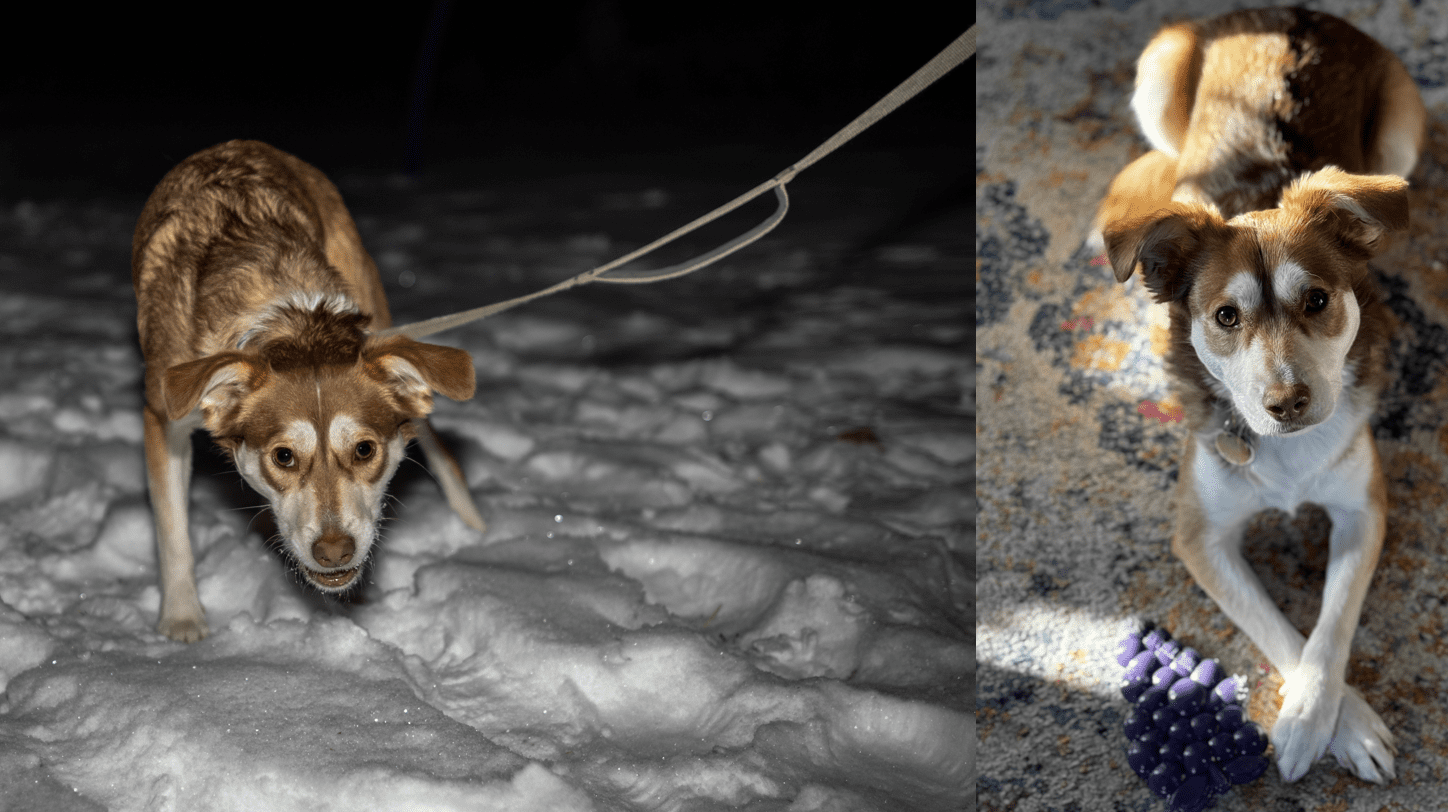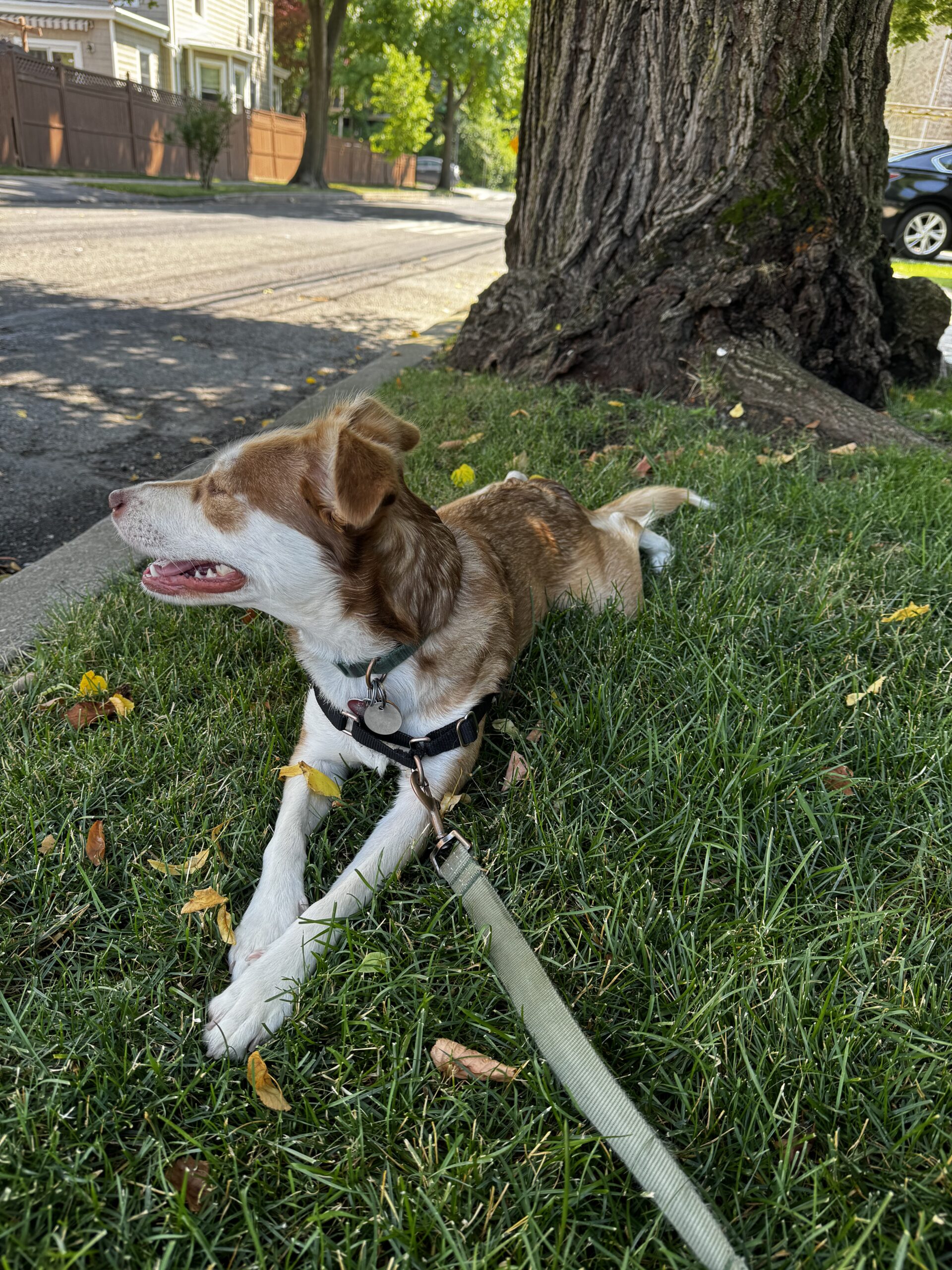Reactive Dog vs Aggressive Dog: Understanding the Key Differences
Many dog owners struggle to differentiate between reactivity and aggression—I certainly did with my dog, Penny. Penny is extremely friendly toward people and other dogs, but when she sees small animals like squirrels, cats, or skunks, her prey drive kicks in, and she bolts, lunges, and barks.
At first, I worried that Penny’s behavior meant she was aggressive, but I soon learned that reactivity and aggression are very different. This guide will help you understand those differences and how to address them.

Scary or sweet?
What Is a Reactive Dog?
Reactivity is an overreaction to a stimulus—whether it’s another dog, a person, or in Penny’s case, small animals. It can look like excessive barking, lunging, or pulling on the leash. However, it is not necessarily driven by aggression.
Penny’s reactivity isn’t due to fear or hostility but frustration and excitement—she sees something moving and instinctively wants to chase it. Other dogs may be reactive due to anxiety, overstimulation, or lack of socialization.
Common Causes of Reactivity:
- Frustration-based: Dogs who want to greet but are restricted by the leash.
- Fear-based: Nervous dogs reacting out of insecurity.
- Prey drive: Dogs like Penny, who instinctively chase moving objects.
- Overstimulation: Dogs overwhelmed by sights, sounds, and smells.
What Is an Aggressive Dog?
Aggression is intentional, hostile behavior meant to intimidate or cause harm. Unlike Penny’s lunging and barking at squirrels, an aggressive dog would show prolonged growling, direct eye contact, snapping, or biting as a means of defending itself or establishing dominance.
Aggressive behavior can be fear-based, territorial, or resource-guarding, and it requires careful behavioral management.
Common Causes of Aggression:
- Fear aggression: A defensive response to perceived threats.
- Resource guarding: Protecting food, toys, or space.
- Territorial aggression: Defending an area from perceived intruders.
- Poor socialization: Lack of positive exposure to different environments.
Key Differences Between Reactivity and Aggression
| Factor | Reactive Dog | Aggressive Dog |
|---|---|---|
| Intent | Overstimulation, excitement, or frustration | Intentional harm or dominance |
| Body Language | Alert but not stiff; may still look at owner | Stiff posture, direct eye contact, growling |
| Trigger Response | Barking, lunging, pulling on leash | Snapping, biting, prolonged staring |
| Recovery Time | Calms quickly with redirection | Takes longer to settle after an episode |
| Can Be Trained? | Yes, with desensitization and impulse control | Requires professional intervention for severe cases |
How I Manage Penny’s Reactivity
Since Penny’s reactivity is rooted in excitement and prey drive, our training focuses on impulse control and redirection:
- The “Look at That” Game: Helps her observe triggers without lunging.
- Engagement Training: Teaching her that checking in with me earns rewards reduces her fixation on squirrels.
- Structured Walks: Keeping her engaged and focused while walking lowers frustration levels.
- Consistent Commands: Using predictable cues like “heel” and “leave it” reinforces calm behavior.
The key is preventing frustration from escalating while giving her an appropriate outlet for her energy.

How to Manage an Aggressive Dog
I’ve had aggressive dogs in the past, and it can be very unnerving when in situations you don’t feel like you’re in control of.
Unlike Penny, aggressive dogs require careful behavioral management:
- Professional trainers are usually necessary to address underlying causes.
- Avoidance of known triggers until trust and training are established.
- Structured confidence-building exercises to reduce defensive responses.
- Calm and controlled leadership to ensure the dog doesn’t feel the need to take charge.
Aggression requires a different approach than a dog with reactivity, which can often be managed with impulse control training.
Final Thoughts: Does Reactivity Turn Into Aggression?
At first, I was worried that Penny’s lunging and barking meant she was aggressive. But through training, I learned that she’s not trying to attack—she just gets overstimulated.
A reactive dog is not necessarily aggressive, but if their frustration isn’t properly managed, reactivity can escalate into defensive or aggressive behavior.
By staying consistent, calm, and structured, Penny has made huge progress, and our walks have become much more enjoyable. With the right training, any reactive dog can learn to feel more secure and controlled in challenging situations.